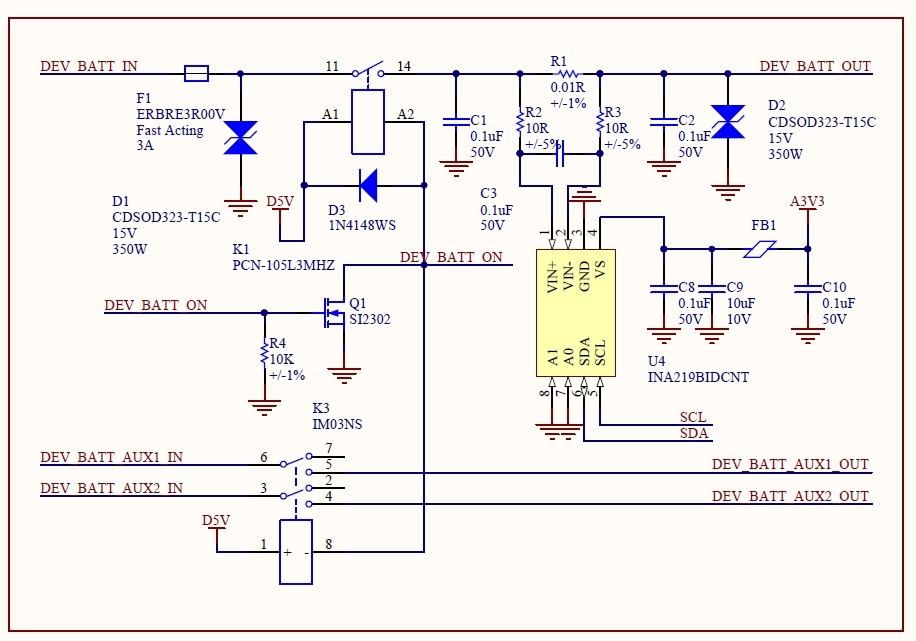Hello,
We have a board with three INA219 connected on the same bus (with diff addresses):
- schematic identical that in datasheet Page 9 (Typical Circuit)
- powered by analog LDO @ 3V3
- 10mOhm shunt, 10 ohms filter + // 100nF
- 100nF on each side of shunt to GND
- TVS (bi-dir, 15V) on each side of shunt to GND
- measure some lithium cell, max 5V
- The gain is 1 (40mV range) and we use 12 bit continuous.
Now everything is right, bus voltage reading is within 10mV accuracy of target. But with no inputs at all, we constant read some 800mV value.
If adding a resistor to GND on any input (100k for example) the reading decrease to 300mV. When lowering this value to 1k, almost no error voltage readout but this of course will false the current reading. If we measure externally, indeed, the voltage is there but from where? There is nothing on the measured line except schematic from datasheet.
Moreover, even the BUS voltage is correct, with absolute no load we still measure some 10...12mA from nowhere.
Software calibration doesn't help at all. Can you suggest what's happening?
Thanks for any suggestions,


